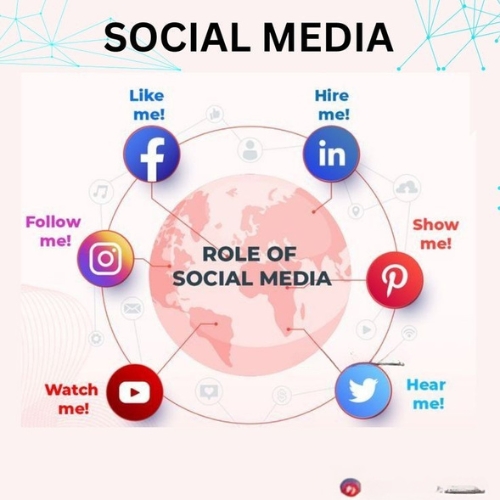
Every social media website serves as a powerful marketing platform. Through it, people can connect, share valuable content, market their products, and in the process, gain trust from consumers. Social media marketing is well beyond posting on Facebook, Instagram, TikTok, and Twitter. Whether you are a novice or experienced influencer, or entrepreneur, this document is intended to help boost sales with proven strategies.
1. Set Specific, Measurable, Achievable, Relevant, and Time-bound Goals

Goals help in determining what actions to undertake in the focus opt audience or client engagement steps. Marketing improvement in social media will be attained by setting goals with a purpose, leading to successful targeted aim outcomes. Marketing objectives need to be blended with brand focus goals instead of the identity driven marketing approach.
To formulate and fulfill your business objectives, think about the questions given below:
- Do you only care about captivating through branding?
- Do you desire an increase in site activity and wish to convert probable visitors to leads?
- Is earning revenue the sole concern and primary purpose while having minimal effort spent on your sites?
Start with the oSmart tip: Start with the SMART goal – Specific, Measurable, Achievable, Relevant, and Time-bound.
Example: “Increase active engagements on our Instagram page by 25 percent in three months.”
2. Conduct In-Depth Research Related To The Audience
Without having tailored information concerning your audience, crafting impactful content won’t be possible.
Specify your audience:
- Age and gender along with location.
- Job position coupled with their salary range.
- Interests along with hobbies.
- Buying behaviors, pain points, and frustrations.
This can be done through:
- Instagram Analytics.
- Facebook audience insights.
- Surveys and interviews with the customers.
Once the elements of buying behavior, pain points, and hobbies are established, clearer details and desires follow.
3. Select The Right Platforms
Not every platform will be useful to your branding. Concentrate on areas where the level of engagement is higher.
Let me summarize it for you:
- Wielding power over fashion and lifestyle? Instagram is the King.
- Organizing local community events and small businesses? Use Facebook.
- Business professional and B2B services? LinkedIn is for You Guys.
- Having to deal with customer care in real-time and fast paced topics? It is X.
- Do it yourself, travel, home or office, and even eCommerce? Pinterest does the showcasing and leading.
Tip: Start out with one or two and track results before moving on to other platforms.
4. Conduct a Social Media Audit.

Take some time to consider the results of your work. What went well? What didn’t work?
Audit Checklist:
- What platforms get the most interaction and have the most traffic?
- Which content type has the most interaction?
- Are brand elements and graphics visually aligned?
- Is there consistency in the frequency of posts made?
- How does the engagement rate stack up against other competitors in the same niche?
To evaluate your Eastern and Western districts, using Sprout Social will provide you with all the tools you need for an inclusive assessment, while Hootsuite and Buffer will help you balance out between the eastern districts and western districts.
5. Create a strategy for the content plan to meet the defined objectives.
Best results come from a thoughtful strategic content outline designed to meet a specific target rather than the ‘content is king’ approach.
Increase output across the following production categories:
- Educational: Tips, how-tos, and tutorials.
- Entertainment: Behind the scenes, reels, and memes.
- Engagement: User-generated questions and content, polls.
- Promotional: Product launches and sale offers.
Professional Content Rule: 80/20 Rule
- 80% focus on providing value through content.
- 20% focus on promotional content.
Use of a calendar allows for better organization when it comes to content and ensures one stays ahead of the competition as well.
6. Keywords and Hashtags
We refer to ‘keywords’ as terms which relate to the topic and help locate the content efficiently, whereas ‘hashtags’ serve the purpose of capturing the attention of the intended audience.
How to Implement Them:
- For your specific market, look for hashtags with Hashtag or RiteTag.
- Combining generic and niche hashtags will result in a more effective branding strategy.
- Hashtags should be incorporated into the bio, into the caption, and the SEO-alts.
As a rule of thumb, don’t go overboard with hashtags. Per platform, 5-10 is reasonable and relevant tags should be adequate.
7. Build an Elaborate Posting Calendar
To create an appealing social persona, branding needs to be cohesive throughout all channels.
Consistency is critical and these pointers can assist in achieving uniformity:
- Post when the audience is the most active.
- Later, Buffer, and Hootsuite, among other apps, can automate posting via scheduling.
- Branding needs to remain the same across every single channel and platform.
With consistent interactions, users are bound to associate multiple images of brands with positive sentiments and trust.
8. Build and Capture Marketing Brand Dialogue
Social networks are solely meant for fun, active engagement, and interaction during a post should go beyond one-sided sentences.
Engagement checklist:
- Respond to comments and DMs in a timely manner.
- Actively work on comments posted on your posts.
- Participate in active conversations.
- Join polls, host competitions, or offer Q&A.
Develop your own branding. It makes a significant difference when non-literal logo interpreters make contact with the graphics.
9. Construct and Report Around Your Data
Data is the life blood of improvement and looking through data ensures that there is always improvement.
Metrics to Monitor:
- Reach and impressions
- Engagement metrics: likes, shares, comments
- Click Through Rate (CTR)
- Follower count
- Conversion Rate
Use Google Analytics, Instagram Insights, Meta Business Suite, and LinkedIn Analytics for advanced tracking. Review data monthly to refine your strategy.
10. Agile Adaptation
It feels like every moment there is a new social media trend, making what’s popular today a relic tomorrow.
In order to stay safe, you should:
- Read relevant blogs and keep an eye on influencer marketing content
- Join niche marketing communities and subscribe to their newsletters
- Experiment with new forms of content like Reels, Stories, or Lives
- Follow changes to the algorithm
Engage with the audience and platform.
Wrapping Up: Use social media to your advantage
A social media strategy does not require everything at once. Focus your efforts.
One approach is to outline the goals, determine the target audience, design the content, evaluate performance, and make strategic adjustments.
In turn, this enables brands, freelancers, and start-ups to formulate solid strategies to increase their business value and build stronger online presences.





